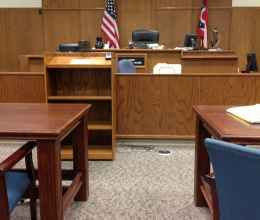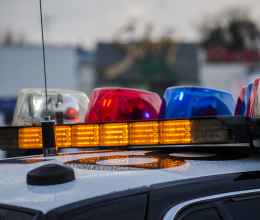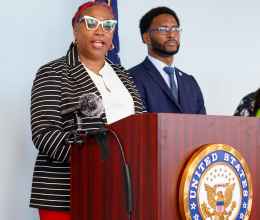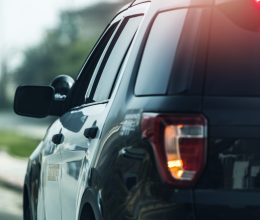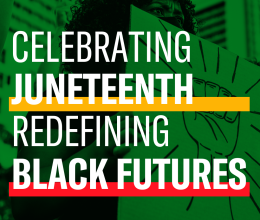By now, many have seen the jarring video from South Carolina of a police officer wrestling and slamming a young Black schoolgirl to the ground and throwing her across the classroom floor. In response, a public narrative emerged to suggest the girl could have avoided this manhandling if she had done what she was asked to do, or had she been more respectful. There have even been demonstrations of support for the officer assigned to the Spring Valley High School in Columbia, S.C., including a walk-out by students. Conversely, other articles reveal the girl was recently orphaned after the death of her mother and discuss the alarming disparity in the way Black girls are disciplined in school.
But let's look at the context of this controversy more broadly, beyond this one "viral" incident.
There is little evidence to suggest that the presence of police in schools—so-called “school resource officers”—makes our schools safer. Moreover, evidence shows that schools across the country have a significant problem with racial disparities in the way they discipline students.
These disparities worsen when looking at the rate at which students of color are referred to police for disciplinary issues in the school setting. Additionally, evidence shows that the involvement of police in school discipline matters often funnels children into the school-to-prison pipeline.
Nationally, Black children are disciplined at a rate three times higher than white children are. So while only five percent of white children are suspended, 16 percent of Black children are suspended for the same or similar behaviors. In Massachusetts, one in eight—roughly 12 percent—of Black children are disciplined as compared to one in 27, or roughly 3.7 percent, of white children.
These statistics are troubling because studies have shown a correlation between suspensions or arrests and the likelihood of a child dropping out of school. The racial disparities are particularly disturbing because, evidence shows, this discipline too often is imposed for non-criminal, non-violent, non-drug offenses.
This does not only happen elsewhere, in places like South Carolina. In Massachusetts, some of our major school districts have disproportionately referred children of color to police for non-violent disciplinary issues in the school, often resulting in arrest of students.
In a 2012 report, Arrested Futures, the ACLU and Citizens for Juvenile Justice examined the use of police in public schools in the three largest school districts in the Commonwealth—Boston, Springfield and Worcester. That study correlated the deployment of police officers in schools with arrest rates for non-violent, non-drug offenses—so-called “public order offenses,” such as slamming locker doors or talking back to teachers.
The findings reveal that, despite the varying roles police officers have in each school district, arrests disproportionately targeted students of color. In Boston, which uses unarmed “school safety officers,” Black students made up 65 percent of all arrests and 70 percent of public order arrests, despite making up only 37 percent of the student population.
Similarly, in Springfield, which places armed uniformed police in the schools, Black and Hispanic students respectively made up 29 percent and 66 percent of all arrests despite making up only 23 percent and 55 percent of the student population respectively. Not surprisingly Springfield, with its armed, uniformed police officers, had the highest arrest rate for these non-violent public order offenses.
So, what do we learn from statistics relating to school discipline, reports about school arrests, and incidents like the one from Spring Valley High School? All suggest a public narrative that too often tolerates the perpetuation of institutionalized racial biases and practices that have no pedagogical value. This narrative allows people to turn a blind eye to the presence of police in schools and the resulting increase in racially disproportionate arrests of children for school discipline issues. This narrative accepts the violent treatment of a Black girl in South Carolina as acceptable because she was disobedient—not because her actions were criminal.
Our schools need more resources—but those resources should not come in the form of police.
Teachers and students alike would be better served by resources that support and train clinical staff to deal with disciplinary matters and related concerns: professional development, reading programs, counseling and psychological services, athletics/physical education, and other student-support services or programs. We also need resources to ensure that schools collect and make public comprehensive statistical data about school-based arrests and referrals to law enforcement. We cannot manage what we do not measure.
Using scarce public education monies to deploy police in schools exacerbates racial disparities, without making schools safer. A safe learning environment for our children must include a promise of equal justice for all.
Blog by Rahsaan Hall, director of the Racial Justice Program of the ACLU of Massachusetts
